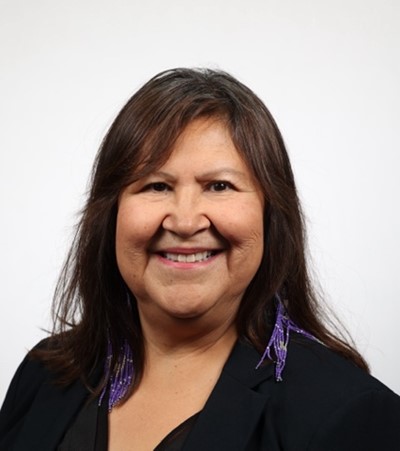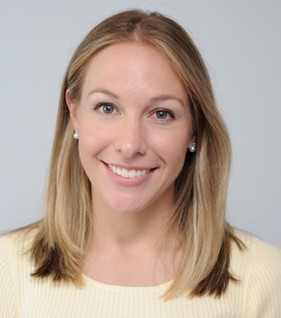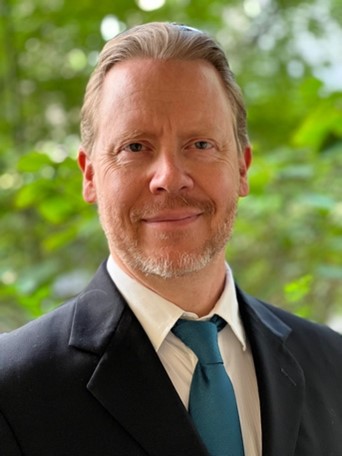2024 Plenary Speakers
 Monday June 3, 2024
Monday June 3, 2024
11:00 – 12:00 EDT
Dr. Peter S. Galbraith (Fisheries and Oceans Canada)
Title: The Gulf of St. Lawrence, undergoing warming conditions and extreme events
Abstract: The Gulf of St. Lawrence is a semi-enclosed sea that is subject to rising temperatures. Sea surface temperatures have been increasing; the May-November averages of the last three years were the warmest of the satellite record and marine heat waves have been stronger and more frequent. In winter, the Gulf can become completely covered by sea ice and nearly half of its volume of water usually gets cooled to temperatures below -1C within the winter mixed layer. But winter air temperatures have been warming at nearly twice the rate of other seasons. In the 15-year period since 2010, 10 of the 15 weakest recorded sea ice seasons have occurred. In the historical records, the Gulf has been nearly free of sea ice during 6 winters, and 4 of them have occurred in this 15 year time span. The winter mixed layer gets capped in spring, creating a cold intermediate layer that persists until late fall that determines the bottom temperature habitat over large areas. This layer has been warming and decreasing in volume since 1990 with large inter-annual variability. On two recent occasions, post-tropical storms Dorian and Fiona have disrupted the water column and mixed heat down to 45 m. Changes deeper in the water column have been even more startling. Waters deeper than roughly 150 to 200 m are entrained inwards from the continental slope by estuarine circulation, taking several years to reach the heads of the Gulf deep channels while mixing and diffusion occurs. This layer has been warming since 2009 at 300 m depth to reach 100-year record highs, up to 7.1C in 2022.
Bio: Dr. Peter Galbraith is a DFO research scientist in physical oceanography whose main interest is the climate of the Gulf of St. Lawrence. He is chair of the Atlantic Zone Monitoring Program and is responsible for delivering State of the Ocean advice. He produces the annual state of the ocean report for the physical oceanography of the Gulf of St. Lawrence and leads the production of the zonal environmental overview. He contributes to DFO's monitoring program by running a helicopter-based winter survey of the temperature and salinity conditions in the Gulf of St. Lawrence.
 Tuesday June 4, 2024
Tuesday June 4, 2024
11:00 – 12:00 EDT
Dr. Myrle Ballard (University of Calgary)
Title: What does Indigenous Science and Anishinaabe mowin say about Weather?
Abstract: Indigenous peoples knowledge and Indigenous science of the land (aki) has sustained them and enabled them to survive since time immemorial. Their knowledge of weather and environmental conditions were important. Aki has changed but their knowledge still prevails. The weather and how language plays a role are important to understand and it is this knowledge of the land and its characteristics that has sustained them.
Bio: Dr. Myrle Ballard is an Associate Professor in the Department of Earth, Energy, and Environment at the University of Calgary. She stood-up the new Indigenous Science Division at Environment and Climate Change Canada. Anishnaabe from Lake St. Martin First Nation, Dr. Ballard’s latest research explores Three-eyed seeing and how her fluency in Anishinaabe mowin can transform approaches to water resource management using Anishinaabe mowin baseline indicators for monitoring. Dr. Ballard also serves on a number of committees and working groups, two of which are recent appointments as Scoping expert for the second IPBES global assessment of biodiversity and ecosystem services; and Expert for the IPBES task force on Indigenous and local knowledge. She currently holds NSERC (Natural Sciences and Engineering Research Council of Canada) and CIHR (Canadian Institutes for Health Research) grants. Her other research interests include, but are not limited to, climate, species at risk, sustainability of flooding/displacement.
 Wednesday June 5, 2024
Wednesday June 5, 2024
11:00 – 12:00 EDT
Laura Twidle (Catastrophe Indices & Quantification Inc.)
Title: Hailstorms and Tornadoes and Floods, oh my!
Abstract: Last year, Canadians were impacted by the most severe weather events, perhaps ever. There were 24 - what the insurance industry calls – catastrophes (CATs). A CAT is single event that results in at least $30 million of insured loss, affects multiple policy holders, and multiple insurers. Before 2023, the greatest number of annual CATs we had ever seen in Canada was 15. The increasing frequency of CATs is strongly represented by an increasing population (or increasing “exposure”) and the effects of climate change. Last year posed a new challenge to the industry, when several CATs were occurring across the country simultaneously – Nova Scotia, the Northwest Territories, southern Ontario, and British Columbia. Now more than ever before, there is a need for a whole-of-society approach to minimize the impacts from extreme weather.
Bio: Laura Twidle is the President and CEO at Catastrophe Indices & Quantification Inc. (CatIQ), Canada’s loss and exposure indices provider. Laura is a meteorologist that specializes in catastrophe forecasting and providing stakeholders with knowledge and tools to make informed decisions. Laura also analyzes insured loss and exposure data to maintain the Canadian catastrophe and industry exposure databases which are housed on the CatIQ Platform. Since 2017, she has participated on the steering committee for the annual Canadian catastrophe conference. Laura holds a B.Sc. in meteorology from Central Michigan University, where she was on athletic and academic scholarships; and an M.Sc. in atmospheric and oceanic sciences from McGill University, where her research focused on extreme rainfall events. Her pastime is filled with soccer, coaching, hiking, pickleball, curling, golf, and hockey.
 Thursday June 6, 2024
Thursday June 6, 2024
11:00 – 12:00 EDT
Dr. David Matthew Hall (NVIDIA)
Title: Tapping into the Explosive Growth of Artificial Intelligence to Tackle Extreme-Events in a Changing Climate
Abstract: In this talk, we'll explore the explosive growth of AI and its potential to revolutionize the prediction of extreme weather events in a changing climate. We'll showcase state-of-the-art data-driven weather and climate models, discuss their strengths, weaknesses, and the intuition behind their incredible speedups. We'll highlight NVIDIA's Earth-2 Inference Microservices (NIMs), which enable efficient AI model integration and deployment. Together, we'll delve into emerging trends in AI for weather and climate, such as generative modeling, learning from earth-observations, foundation models, adaptive learning, and AI agents. Time permitting, we'll speculate on potential impacts of AGI on society and the environment, as we consider whether we're on the cusp of this pivotal technology.
Bio: Dr. Hall is a Senior Solution Architect and Data Scientist at NVIDIA, where he specializes in AI applications for weather and climate. Prior to joining NVIDIA, he gained extensive experience as a computational climate scientist at the National Center for Atmospheric Research (NCAR) and as a research professor in the Computer Science Department at the University of Colorado Boulder. Dr. Hall holds a PhD in theoretical physics from the University of California, Santa Barbara. Throughout his career, he has made significant contributions to the fields of computational physics, climate model development, and artificial intelligence, including co-authoring the Nonhydrostatic atmospheric dynamical core on the Energy Exascale Earth System Model (E3SM) and the High-Order Methods Modeling Environment (HOMME) nonhydrostatic atmospheric model for the Community Earth System Model (CESM).
